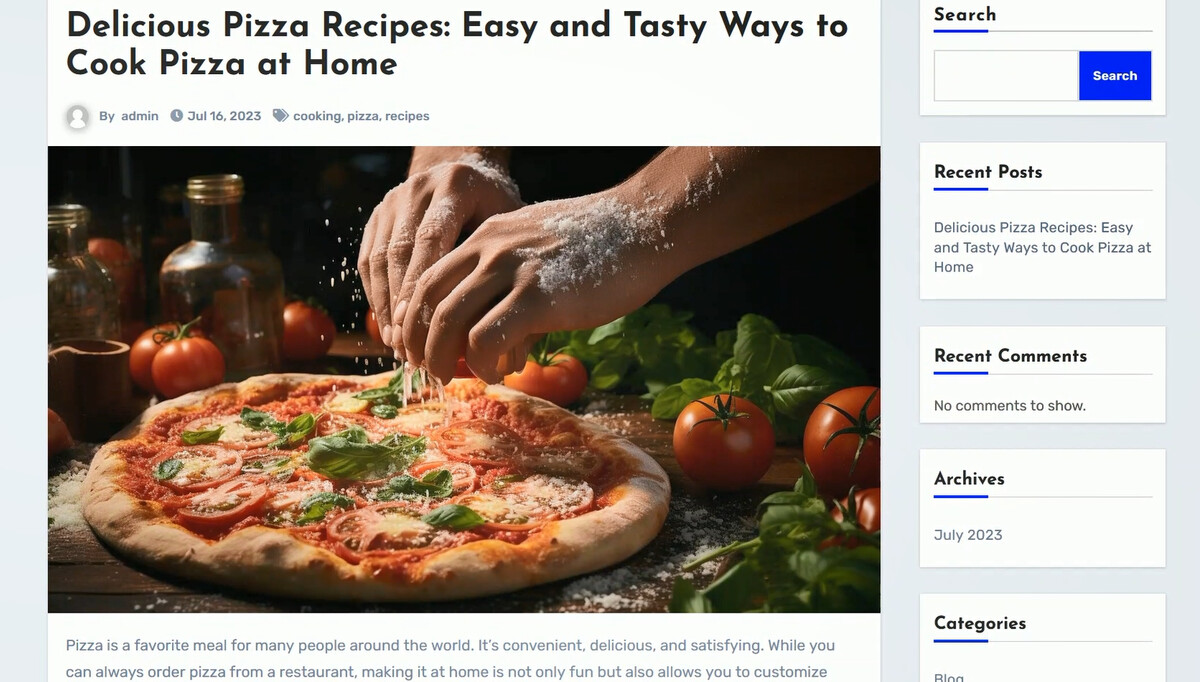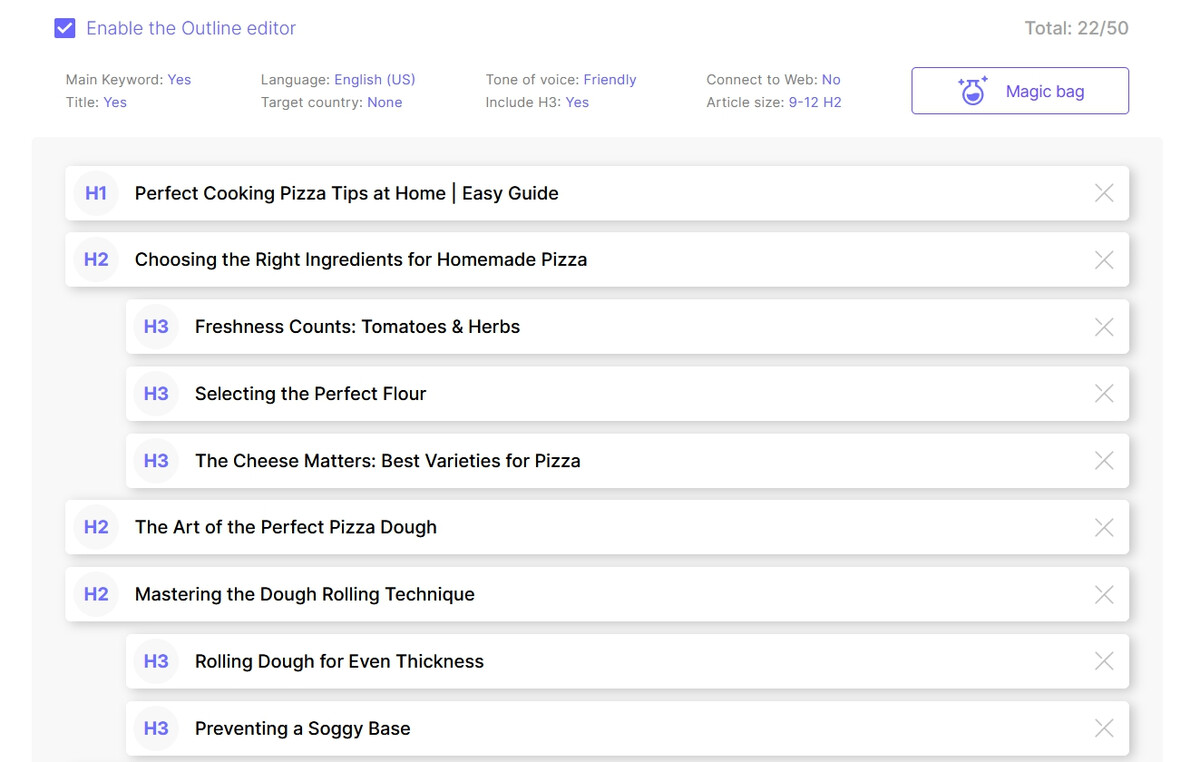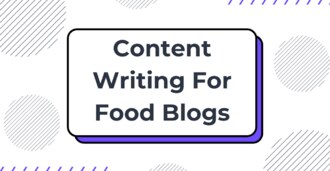Top 11 SEO Copywriting Tips For Beginners

Did you know?
The first five spots of the search engine results page get more than two-third of all the clicks.
That means if you want more clicks and conversions from your posts, it has to be in those first five spots.
But to achieve those top rankings?
You first need to know the fundamental SEO copywriting strategies and tips that actually work and help you get there.
In this guide, you’ll learn all the top 11 essential tips that professional SEO copywriters use in their content to rank their blog posts and get consistent organic leads.
Quick Note: If you’re looking for a tool that can speed up your SEO Copywriting workflow and generate high-quality SEO-Optimized content in one click, then check out SEOWriting (It’s free to try!). But more on that later. Let's get into the tips first!
1. Start With Keyword Research

Keyword research is where SEO begins. It’s the process of finding the exact terms your audience types in search engines.
Done right, keywords connect your content with the right readers and improve your search engine rankings. Here’s how to approach it step-by-step.
Get Specific with Keywords
Instead of targeting broad keywords like “Content Marketing Tips,” think about long-tail keywords (phrases with 3+ words) that capture more specific search intent, like “Content Marketing Tips For Small Businesses”
These keywords usually face less competition, making it easier for your content to rank and attract the right audience.
Tools For Keyword Research
1. Google And Forums:
Start with audience research. Explore forums and social media platforms where your target audience is present.
See what type of questions they are asking frequently. If you’ve been active for even a few days, you’ll get a good idea about the common problems in your industry. Note them down and based on that, start entering broad terms on Google, then explore related keywords.
2. Ahrefs:

These are paid tools offering deeper insights. Google Search, Google Trends, and other free keyword research tools are good for getting ideas.
But for detailed metrics for each keyword like search volume, competition, and more, you will need some paid tools.
Ahrefs, for example, provides keyword difficulty scores, showing how tough it will be to rank for a specific term. Based on that, you can prioritize the topics and prepare your keyword list.
Once you’ve identified several good keywords, create a keyword list of the top 20-30 keywords, arranging them in their relevant categories. Then start writing content pieces on them one by one.
2. Craft Engaging Headlines

Headlines are your first chance to grab readers, so make them count. A good headline tells the reader what they’ll gain and encourages clicks. And for SEO, a headline should include your primary keyword naturally.
How To Make Headlines Stand Out
-
Keep It Clear and Action-Oriented: Tell readers exactly what they’ll learn or achieve. For example, “Top 5 Tools To Find Low-Competition Keywords”
-
Use Numbers or “How-To” Phrasing: These types of headlines perform well in search results. For instance, “How to Write Blog Posts That Ranks.”
Why Headlines Matter
Catchy headlines lead to higher click-through rates (CTR).
Studies have shown that headlines that use numbers and clear benefits can boost CTR by up to 36%. Higher CTR signals to search engines that readers find your content relevant, which can improve your ranking.
3. Focus On Reader-Friendly Content

The above post example is from ZoomInfo. As you can see, the content is organized with nicely bolded subheadings and lots of white spaces and padding in between, plus, shorter paragraphs. This kind of content structuring is what makes a content piece reader-friendly.
SEO copywriting is not just about keywords. Content needs to be reader-friendly and engaging for it to perform well.
Google and other search engines prioritize content that’s easy to read, engaging, and valuable. Here’s how to make your content resonate.
Write in Short Paragraphs and Sentences
Content that’s easy to scan performs better. Use short paragraphs (2-3 lines max). Add stylistic elements like bold, italics, line breaks, and more spacing to make it easy to scan.
And each subsection of your content piece should provide clear, actionable insights in bite-sized portions.
Add Value Through Examples and Clear Explanations
Help your readers apply your tips by including real-world examples and straightforward explanations.
For instance, if you’re discussing keyword density, provide a sample paragraph showing how to use keywords without overdoing it. This builds trust and keeps readers engaged.
Balance SEO With Natural Language
While optimizing for keywords, ensure the language remains natural and conversational. Avoid forcing keywords; instead, let them flow where they make sense. This keeps readers engaged and also avoids keyword-stuffing penalties from search engines.
4. Use Subheadings To Guide Readers

Subheadings are more than just breaks in text—they guide readers through your content and offer a great reading experience.
Pro-Tip: Each one of your subheadings should preview what the reader will find in that section, making it clear and easy to follow.
Best Practices For Subheadings
-
Keep them short and relevant: Aim for 6-8 words and include relevant keywords naturally.
-
Use a question format if it fits the topic. This can keep readers interested, like "How Does SEO Improve Rankings?"
-
Break down complex ideas: For example, if explaining keyword research, subheadings might be "What Are Keyword Research Tools" or "How to Choose Keyword Research Tools"
Pro Tip: Use subheadings to break down longer explanations into digestible parts. According to studies, over 7 in 10 readers online are more likely to skim the content rather than read it thoroughly.
Subheadings create natural stopping points, making it easier for readers to come back and continue reading later.
5. Add Internal Links

See how in the above post example from Shopify, proper internal links have been added with the appropriate keywords.
Internal links, or links connecting pages within the same website, are crucial for both user experience and SEO.
They help search engines understand your site structure while giving readers a chance to explore related content.
How to Use Internal Links Effectively
-
Aim for 3-5 internal links per post. These should link to relevant content, such as “How to Start SEO” if you’re covering basic SEO copywriting tips.
-
Choose relevant anchor text: Avoid generic terms like “click here.” Instead, go with descriptive phrases like “learn about keyword research basics” for added SEO value.
-
Link to important content: Identify essential articles on your site that cover major topics. Each new post should link back to these key pieces, boosting their SEO value over time.
Pro Tip: Use internal links as a chance to highlight your strongest resources. It not only improves site SEO but also keeps readers exploring more of your content, increasing their engagement and time spent on the page.
6. Include High-Quality External Links

External links that point to high-authority sources add credibility to your content. When done right, they not only strengthen your information but also signal to search engines that you’re citing trustworthy information.
Best Practices for External Links
-
Link to reputable sources: Choose well-established sites like educational organizations, research institutions, or respected industry blogs.
-
Limit links to 1-2 per 500 words: Too many external links can look cluttered or spammy. Focus on only the most relevant and credible sources.
-
Use links to back up claims or statistics: For instance, if mentioning that “SEO improves conversion rates by 20%,” link to a relevant case study or research.
For instance, suppose your content mentions the impact of keyword optimization on search ranking. Linking to a reliable source that provides related data makes your content more credible and research-backed. It’s an easy way to strengthen both your SEO and your reader’s trust.
7. Keep Your Content Readable

Readability impacts both reader engagement and SEO performance. When content is easy to understand, readers are more likely to stay on the page, leading to better rankings. With SEOWriting’s Readability Mode activated, you can easily generate high-quality content that’s actually readable.
Tips For Improving Readability
-
Use short sentences and paragraphs: Aim for paragraphs with 2-3 lines, and keep sentences concise. This makes the content more skimmable and digestible.
-
Limit jargon: Stick to common conversational words over technical terms. Readers just want information quickly, and get their problem solved in the easiest possible way.
Quick Example
Instead of, “The implementation of SEO strategies will positively impact your website’s ranking on search engines, leading to increased visibility,”
Try: “Good SEO improves your site’s ranking, helping you get noticed.” It’s shorter, direct, and easy to process.
8. Use Bullet Points For Key Points

The above post example is from SmartBug Media, which highlights the best use of bullet points to break up text and improve content readability.
Bullet points make complex information easy to absorb. Readers can quickly scan and pick out main ideas without reading dense paragraphs.
When To Use Bullet Points
-
List features or benefits: They’re ideal for quick summaries, such as listing SEO strategies or tool features.
-
Highlight steps in a process: Use bullets when explaining a step-by-step guide. It keeps the flow clean and organized.
-
Make comparisons: If outlining pros and cons, bullet points keep comparisons neat and balanced.
Bullet points improve readability and encourage readers to stay on the page longer, which signals to search engines that your content is valuable.
9. Optimize Images

Images do more than break up text—they play an important role in SEO too. Optimized images contribute to faster load times and improved user experience.
Image Optimization Tips
-
Compress images: Heavy image files can take longer to load. So use image compression tools to make images lightweight without losing image quality and improve website loading speed.
-
Add alt text: Alt text describes the image content for screen readers and search engines. Include a keyword if relevant, but make it natural. For example, “alt=’Step-by-step guide for SEO beginners.’”
By optimizing images, you improve page speed, which can boost your rankings. Studies show that pages loading within 2 seconds have lower bounce rates—good news for SEO and user experience.
Related Read: Best Tools For SEO Copywriting
10. Write Meta Descriptions That Convert

Meta descriptions give readers a snapshot of your content and influence click-through rates (CTR). They should be informative, keyword-rich, and under 160 characters.
How to Write Effective Meta Descriptions
-
Include the primary keyword: Naturally weave in the main keyword to improve relevance.
-
Use action words: Words like “learn,” or “find out” create a sense of value or urgency.
-
Highlight the benefit: Show readers what they’ll gain. For example, “Discover 10 actionable SEO tips for better rankings and increased traffic.”
Pro Tip: Experiment with A/B testing for meta descriptions on content that frequently changes, such as landing pages or high-traffic blog posts. Meta descriptions don’t directly impact rankings but can increase CTR, indirectly benefiting SEO.
11. End With A Strong Call-to-Action (CTA)

At the end of its post, Unbounce adds a CTA to check out its templates which leads to more conversions for their products.
A CTA encourages readers to take the next step, whether that’s signing up for a newsletter, reading related posts, or starting a trial. Effective CTAs guide readers toward meaningful engagement.
Crafting an Engaging CTA
-
Be clear and specific: Tell readers exactly what to do. Example: “Ready to improve your SEO? Start with our beginner’s guide.”
-
Highlight the benefit: Make it clear why the reader should take action. For example, “Get tips that bring in more traffic.”
-
Keep it brief: Avoid lengthy CTAs. A short, direct message is more compelling.
A well-placed CTA not only wraps up your content but also improves reader engagement, encouraging them to stay connected with your brand.
How SEOWriting Can Help You In SEO Copywriting?
SEOWriting is designed specifically for Freelance SEO Copywriters, Bloggers, and Content Marketers who want to speed up their content creation workflow and create more content in less time.
All you need is just your target keyword topic. SEOWriting takes care of the rest, creating a high-quality SEO-Optimized blog post—in a matter of a few minutes. Use it as a first draft or post it directly on your WordPress site with the auto-posting feature.
Some of the key features that really make SEOWriting stand out:
1. One Click Blog Post - No more hassle of spending hours creating SEO blog posts with other AI tools.

2. Custom Brand Voice Setup - Want to generate SEO blog content while maintaining a consistent brand voice? Just add your content and let SEOWriting generate a fully customized brand voice for you.

3. Automatic Image Addition - You don’t have to think about images separately. SEOWriting will add relevant high-quality images in relevant spots inside the content.

4. AI Text Humanizer - You can generate SEO content that’s not only SEO optimized but also reads well like a human-written blog post—which is important for better content readability and engagement.

Final Thoughts
SEO Copywriting doesn’t have to be complicated. Simply follow the fundamental SEO tips and Copywriting techniques. And that would be more than enough to start creating high-quality content that ranks well and brings in clicks and conversions.
The best way to learn SEO Copywriting is to observe the SEO Blog Posts that are already ranking and bringing in consistent leads.
See what type of content they are writing, how they format their posts, what tone they use, and how short are their paragraphs. Once you start observing those small details, you’ll easily pick up strategies that actually work.
Ready to start optimizing your SEO Copywriting Workflow and create your first draft fast? Try SEOWriting for FREE now!



Write 10X Faster With AI-Powered Content
Create SEO-optimized articles in 15 minutes instead of 5 hours. Join 50,000+ content creators who generate content that ranks on top positions on Google. Save up to 80% of your time while getting 2X better results.
Try for Free →
